Please share with your friends!
What is a Storybook journal for preschoolers?
My daughter is 2 years and 10 months old and she is starting to tell all kinds of stories with her toys and stuffed animals. She’s also starting to tell stories in her own words as she turns the pages of her favorite books.
Although my daughter’s not writing yet and hasn’t expressed too much interest in drawing pictures yet, she can still tell her stories in a journal! We don’t have to wait until she turns 4, 5, or 6 to start “writing” in a journal.
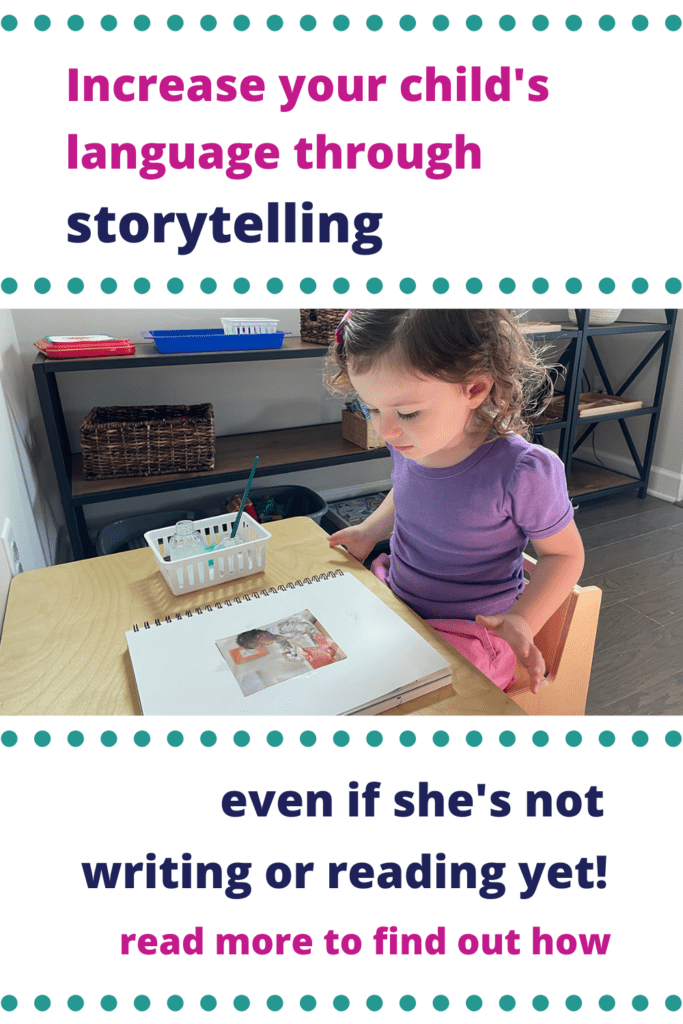
Storytelling with pictures and art
Check out my post about language activities you can do with your toddler or preschooler. In this previous post, I wrote about activities from the Montessori Language Curriculum, including storytelling with pictures and art: a fun way to incorporate art with language. Your child can draw or paint a picture and tell a story about it for you to write down.
But, if your child doesn’t want to draw a picture, you could have your child choose a picture (photos from magazines or online) to glue on the paper. Your child can tell a story about the picture.
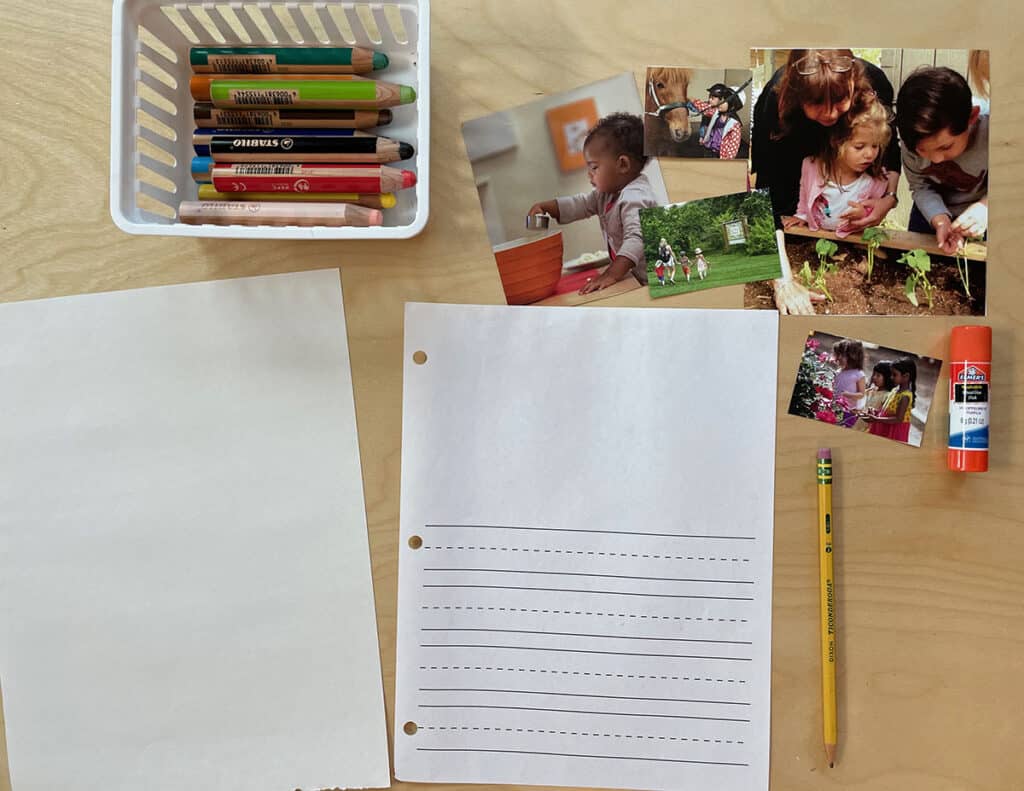
I wrote about how this activity was one of the kids’ favorite activities to do in my Montessori classroom! Usually, the kids would draw a picture or paint at the easel, and bring the picture to me to tell a story about the picture. I would then write down the story at the bottom of the picture.
These picture and art stories were on a single piece of paper to take home. But papers could get lost or thrown out. So I thought it would be a fantastic idea to keep my daughter’s picture and art stories in a journal and call it a Storybook journal!
Benefits of starting a storybook journal
There are two main benefits to journaling a storybook:
- First, it helps your child realize that there is a connection between the words they speak and the words on paper.
- This picture story activity is an example of dictation; when your child tells a story about what’s in the picture and you write it down word-for-word. By doing this, your child will understand that the written word is directly related to spoken language and communication.
- Your child will begin to realize that printed words mean something.
- Your child understands that she can also communicate with the printed word.
- The second main benefit is a boost in your child’s creativity. This is a great way for your child to practice self-expression and increase confidence in telling a story, even if she can’t write or read yet.
You are modeling writing
In addition to the two main benefits above, you are modeling writing for your child.
- As you model writing, you are showing your child that you are excited about writing, it is purposeful, and it has meaning.
- You model that the letters and words have sounds; you write them as you say them. So, this is a great way to model phonemic awareness; your child gets a taste of how sounds and written letters are connected.
- You model punctuation (capital letters, periods).
- You model how to write the letters in the correct position on the lines. You could use a journal with handwriting lines so that your child sees the correct placement of letters.
How to introduce a storybook journal for preschoolers
-
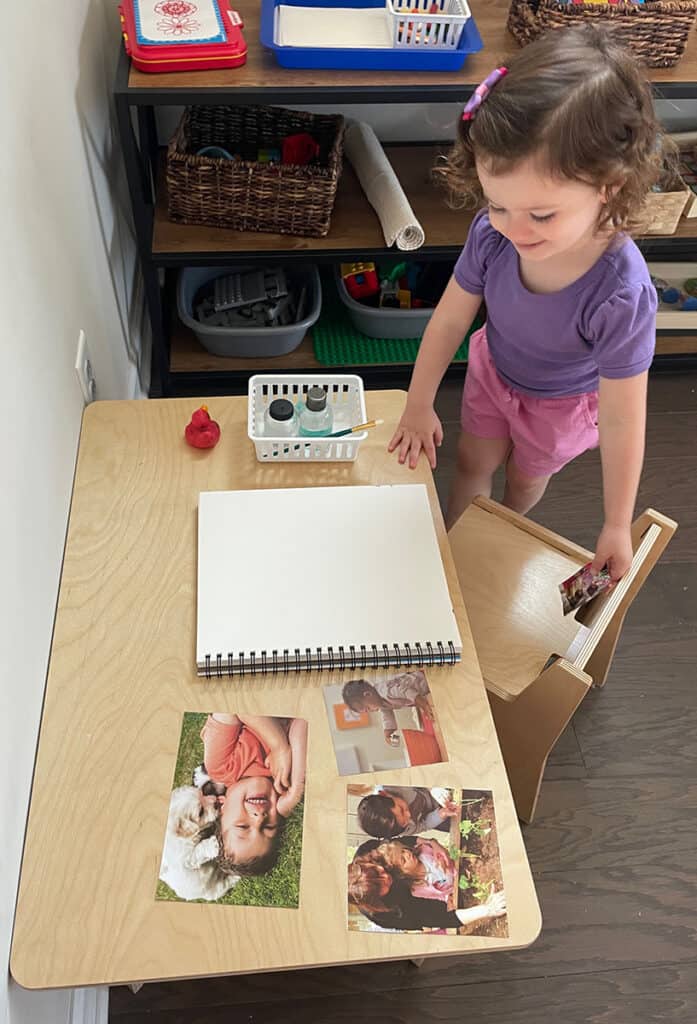
1. Choose a picture -
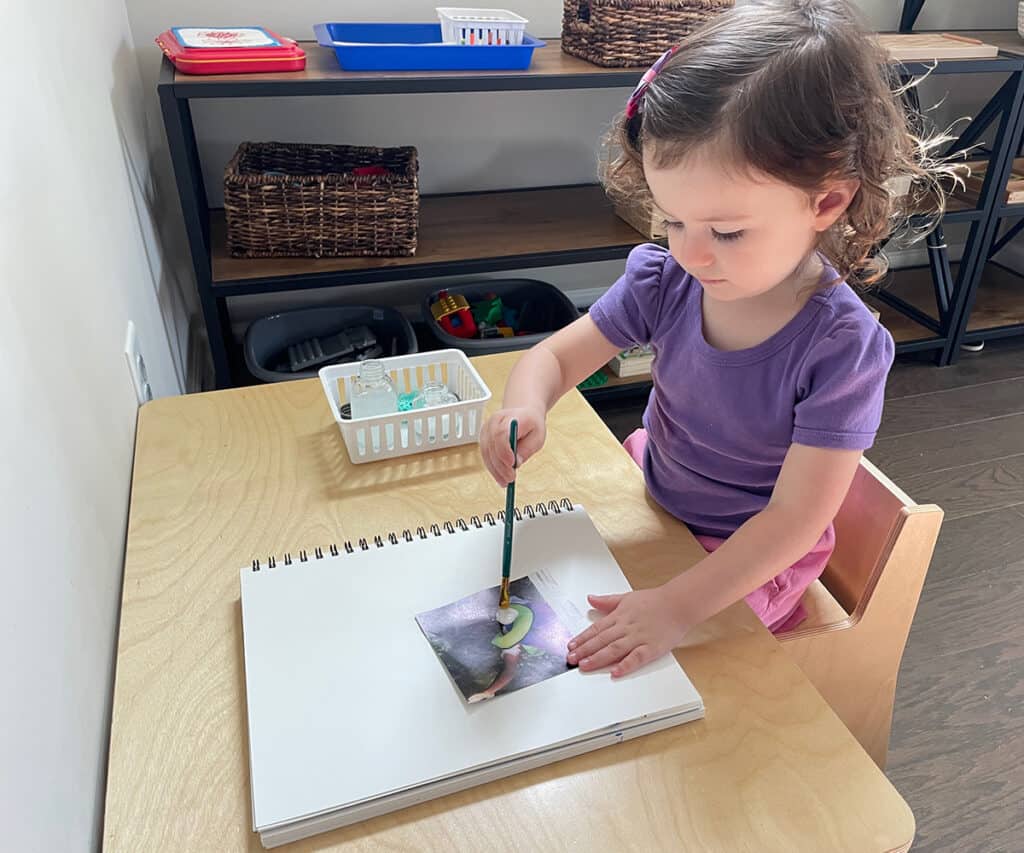
2. Glue the picture on the page
-
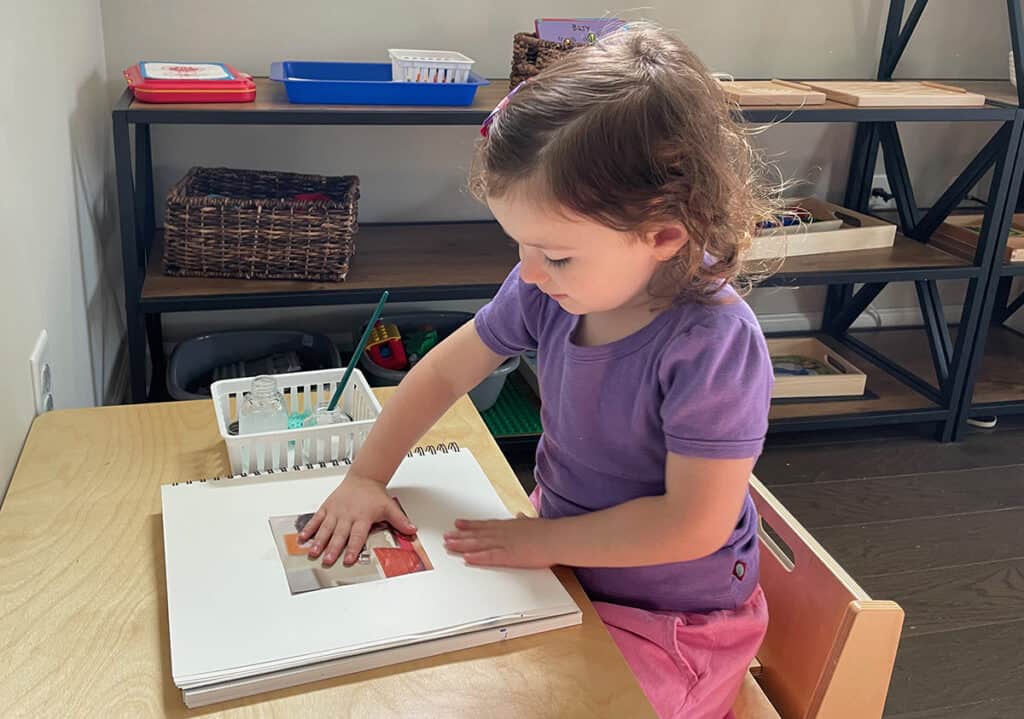
3. Press down -
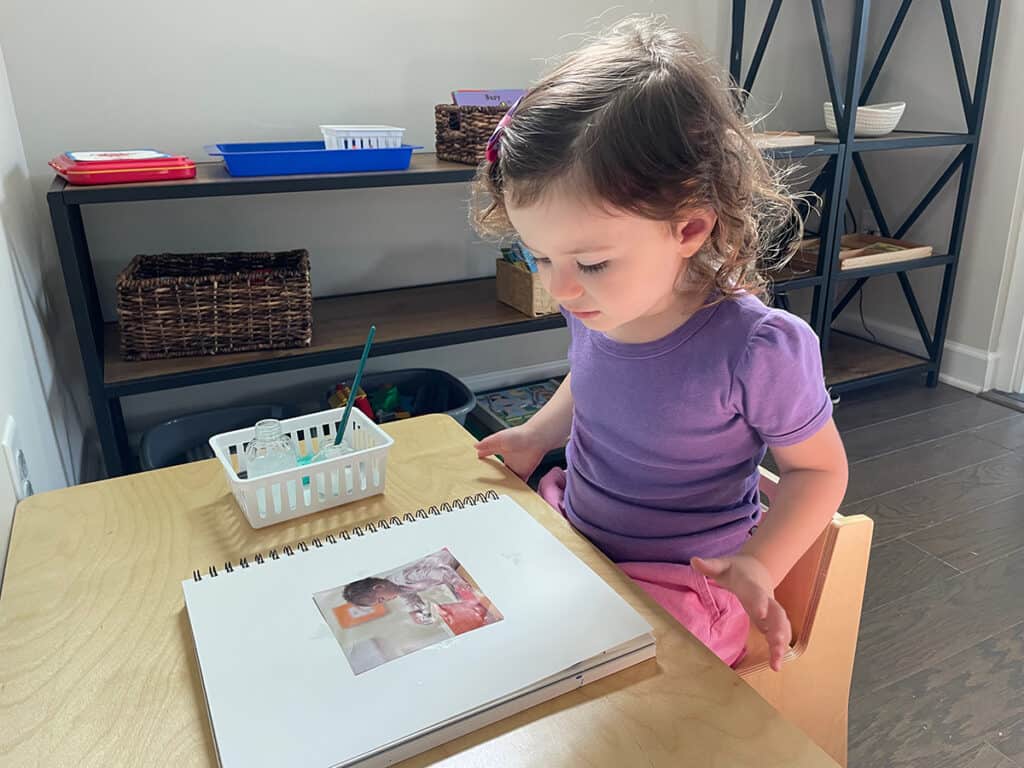
4. Tell me what’s in this picture
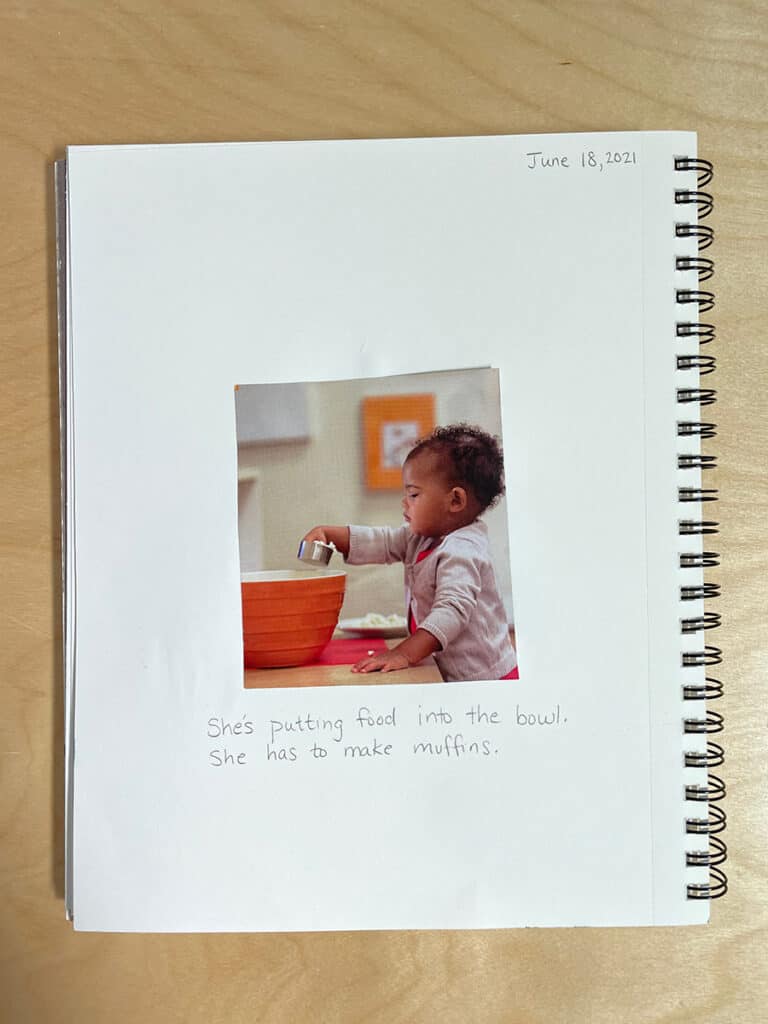
Set Up the Activity:
- Gather photos from magazines, online, or print out some of your photos. You can put them in a basket on the shelf so that your child can choose a picture independently.
- Get a journal (see below for ideas).
- Get the glue. You can use a glue stick or a glue tray. You can keep them on the shelf so that your child can get the glue independently.
Start the activity:
- Ask your child to choose a picture.
- Show her how to glue the back of the picture
- Stick the picture on the page in the journal
- Ask your child what she sees in the picture. You can say:
“We can write down the words we say when we talk about a picture. We can write a story about the picture. Can you tell me a story about this picture? Then, I will write it down.”
- Carefully and slowly write down what your child says on the paper. Encourage your child to speak in phrases, not single words. If your child loses her thought, read what you wrote so far. You can ask specific questions about the picture to encourage ideas.
- When finished, read the whole story aloud to your child.
Tips:
It’s normal for the youngest two and three-year-olds to label different things in their picture. With time in practice, they’ll start to tell their stories in more complete sentences.
It’s okay to gently fix your child’s use of grammar; repeat (and write down) what your child says but in the correct way to say it. You can do this without pointing out mistakes, but rather by modeling.
Journal ideas
You can use anything for a journal. You can use whatever you have around the house:
- sketchbook
- notebook
- paper folded together and stapled to make a DIY journal
- journal-lined notebook- you can model the correct placement of the letters on lines
- bind copy paper together with a folder cover
For my daughter’s journal, I purchased a Canson XL Mixed Media 9″ x 12″ sketchbook (affiliate link). Using a journal with thicker mixed media paper is great because you may end up using watercolor paints or liquid glue on some days. The pages will stay sturdy and not get wavy when wet.
Here are more ideas you can do with your child’s storybook journal:
- Nature journal – go outside and get inspiration from nature
- Theme/topic journal – what are you learning about this month with your child? Include this in your journal.
- Story basket journal –
- gather small language objects and figures of animals (about 12 objects) and put them in a small basket.
- have your child choose 3-4 objects from the basket.
- draw a picture about the objects and tell a story about it
- Art journal – explore with different art mediums and write about your drawings in your journal.
Ideas if your child doesn’t want to draw a picture
- crayon rubbings of leaves
- Items from nature for a collage
- flowers, herbs, leaves, seeds
- Glue a collage with craft items
- buttons, yarn, tissue paper, scissor clippings
- stamps
- stickers
- print out your photos (your child can try to take pictures, too!)
- pictures from magazines, old books, catalogs, printed from the internet
I searched for photos you could use for this activity and saved a folder called “picture story” on Unsplash. You can also search for more photos on Unsplash and download them all for free!
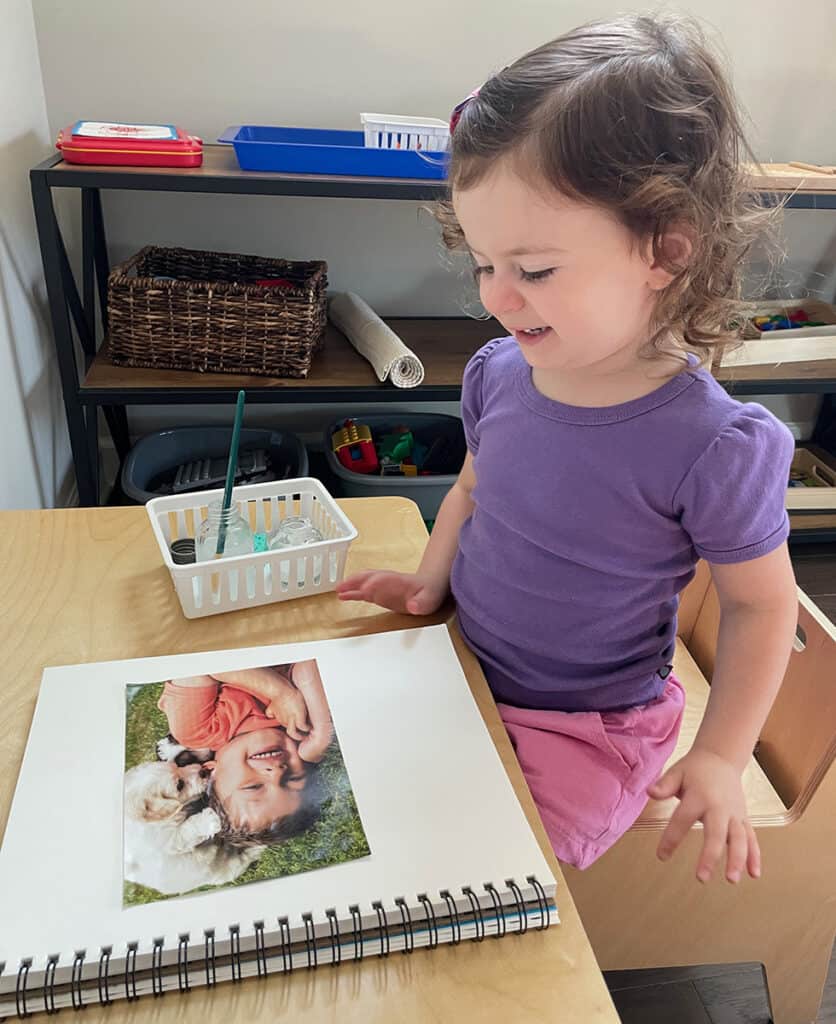
Concluding Thoughts
I was so pleased to see how much my daughter loves her storybook journal! We also tried drawing a picture but she didn’t seem interested in telling stories about her art. But her face lights up when she tells a story about what she sees in a photo!
This is a wonderful activity for language development and it’s one of the first activities in the Montessori Language Curriculum. It’s a great way for your child to explore the connection between the spoken word and the written word, and it also helps boost your child’s self-expression and confidence in telling stories, before your child can write and/or read.
Have you tried this activity? Let me know how it goes!
More Montessori Resources
If you liked this post, you’ll enjoy this similar post:
Create 4 Simple and Playful Storytelling for Kids Activities
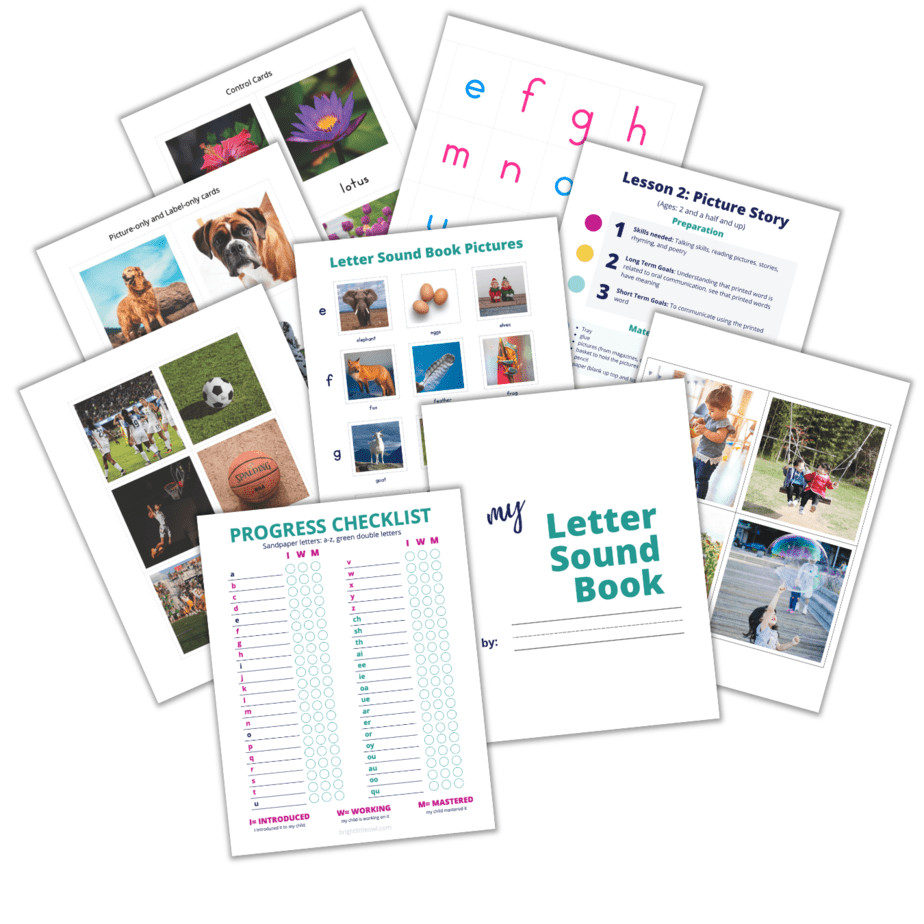

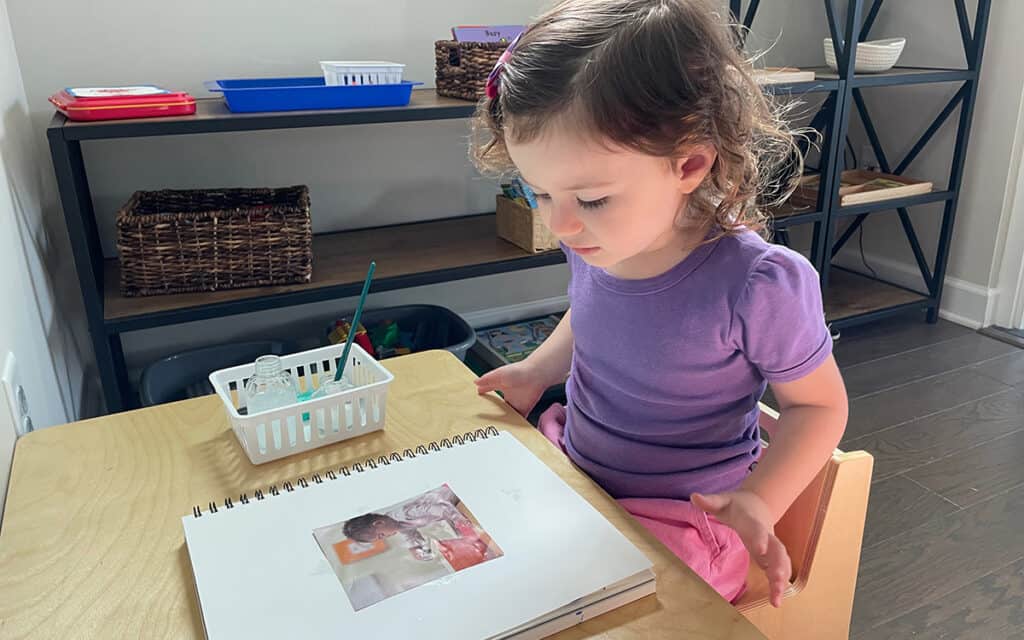
This is a really great idea! I will have to look into doing this for my toddlers.
We all need follow this innovative way of learning and teaching especially for kids.
I absolutely LOVE this. My daughter is just now starting to tell stories. I’d love to do something like this to encourage her.
This is so cute and looks like so much fun to make. What a great keepsake for them to have when they get older.
Great tips on getting your kids started on her own blog!! Joking aside, you’ve listed so many benefits for doing this. Great job!!
What a wonderful project for preschoolers. It is nice to have some ideas to get them using their creativity and staying busy.
This is a great idea! My 3 year old will love this!
What a great way for really young ones to use their imaginations. I can see how this will lead to them loving reading and writing as they get older.
This sounds like a great idea for preschoolers. What a wonderful way to inspire creativity and learning.
i recall my own teens making such journals when they were little.. we have saved them so they can look back at it when they are older 🙂
This is such a fab idea and great tip if your child doesn’t want to draw a picture, to just have them pick a picture instead!
I have so many loose papers, putting everything in a book is not only convenient but I love how you will see the progression over time in one place. The kids are learning but also creating creating beautiful keepsake!
Indeed such a beautiful tip for making learning both fun and informative as well.
Pingback: Montessori Language Curriculum: 5 Activities to Get Your Toddler or Preschooler Started Now! - Bright Little OwlMontessori Language Curriculum: 5 Activities to Get Your Toddler or Preschooler Started Now!